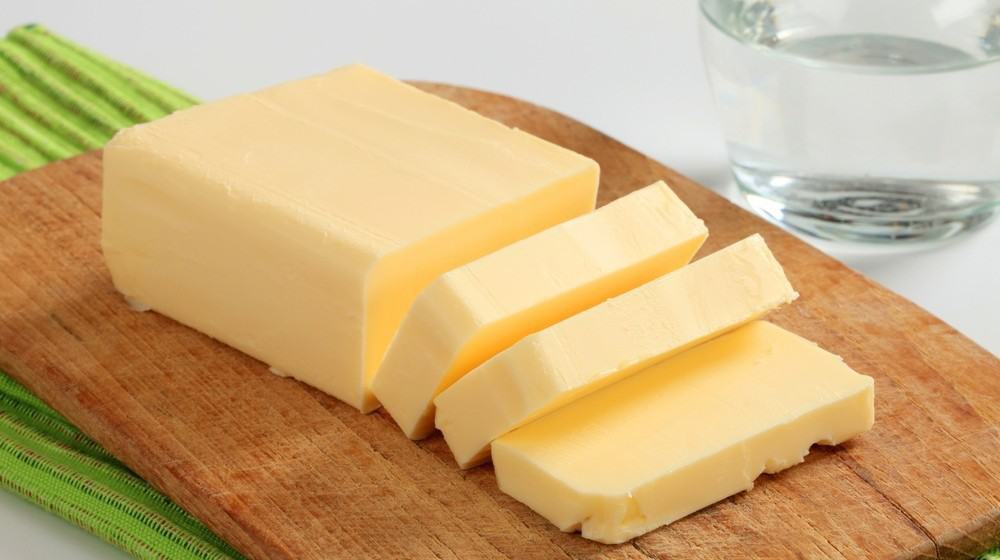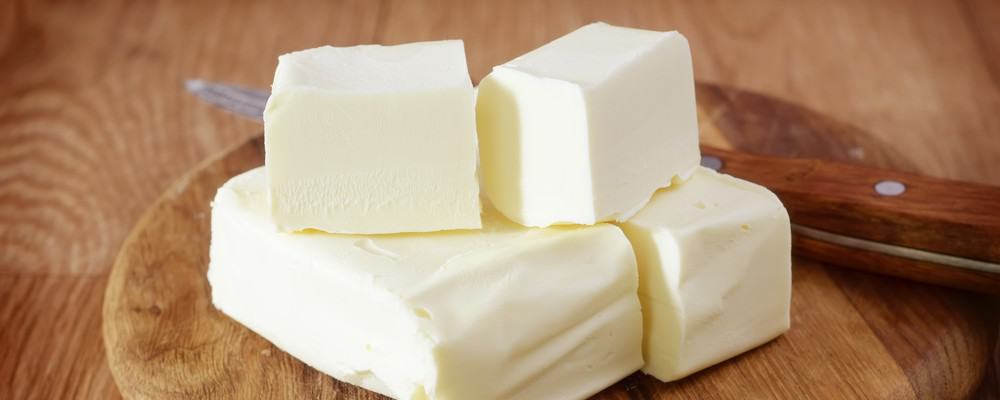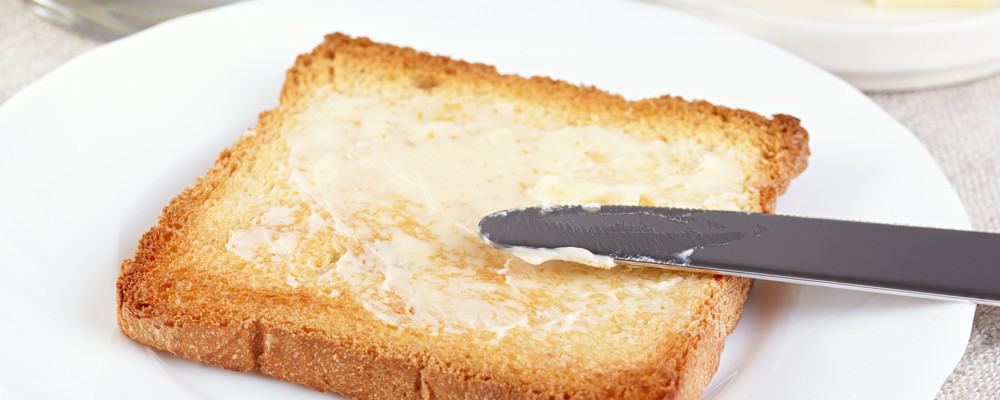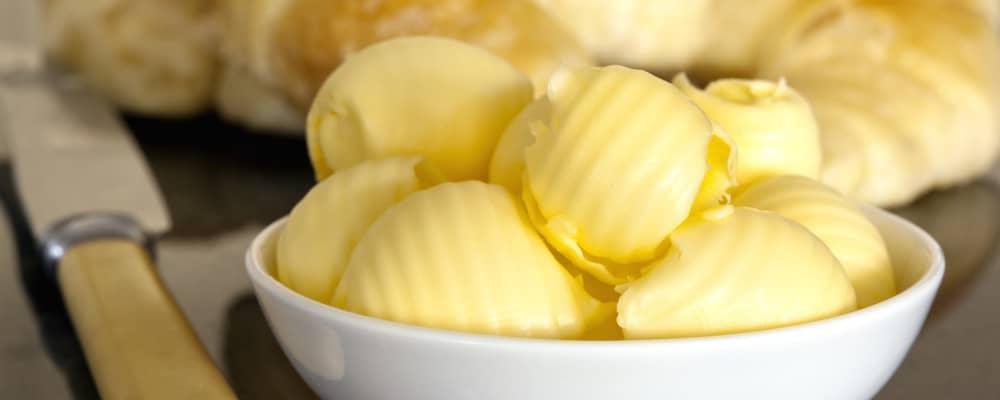
I have many happy memories of pulling a fresh piece of hot toast from my toaster oven, spreading some butter and honey on the bread, and enjoying a delicious snack — complete with a glass of cold milk.
Man, I miss those days when I could eat whatever I wanted without having to worry about gaining weight, putting fats into my body, and keeping my cholesterol down.
Butter is one of the tastiest spreads around, but, unfortunately for us butter lovers, it’s got a whole lot of saturated fats. This means that it’s going to start clogging up my arteries in a few years, so I’ve got to stop eating it.
Or do I…?
Types of Butter

Did you know that there are different types of butter produced in this marvelous modern world of ours?
Where once there was just butter, now there’s:
Churned Butter
This is the traditional butter, the stuff that you’ve been eaten since you were a wee sprout. The butter is made via the churning of cream, and salt is sometimes added to the butter to give it a delicious flavor. Churned butter has 100 calories per tablespoon, and there are 11 grams of fat and 7 grams of saturated fat in just that one tablespoon.
Sweet Butter
This is the butter that doesn’t have salt added to it, so the lactose — the sugar in the milk — gives it a sweet flavor. It has the same number of calories and grams of fat per tablespoon as churned butter, but it’s lower in sodium thanks to the lack of salt.
Whipped Butter
Whipped butter is made by whipping air into regular butter. The good news is that this butter has about 70 calories per tablespoon, as well as 7 grams of fat and 5 grams of saturated fat. It’s a bit lower in fat, but it doesn’t have as much flavor.
Spread Butter
This is the stuff that you get in those tiny packets when you eat at a buffet, the butter that spreads much easier. This butter has canola oil added to it, so the pure cream has been adulterated. There is roughly the same amount of fat and calories in this butter as in whipped butter.
100% Butter, the Better Butter?

Did You Know: The churning process only provides a fat content of 80% for butter?
The reason that 100%, regular churned butter is the best is simple: it helps you to feel full. An article released by the Weston A. Price foundation states that because butter is rich in nutrients — nutrients like Vitamins A, D, and E — it will help you to feel full. The same cannot be said for the lighter butters, as they lack in nutrients.
There are many more amazing benefits that are highlighted in this fascinating article, such as:
Promoting Growth
Butter contains Vitamin A, which helps children to grow. It helps in the development of their faces, bones, teeth, and sex characteristics.
Reducing Heart Disease
This goes against everything you know, but butter can actually help to reduce heart disease thanks to the lecithin that helps your body process fat and cholesterol more easily. It contains antioxidants to help prevent cholesterol buildup, and it will reduce your risk of heart disease.
Fighting Cancer
Butter is rich in linoleic acid, selenium, and Vitamins A and E, all of which can help to protect your body against cancer.
Preventing Arthritis
Butter contains stigamasterol, which causes it to be stiff. This “stiffness factor” helps to prevent your joints from being calcified.
The War Between Margarine and Butter

The war between butter and margarine has long caused contention between health nuts. People grab their greasy butter knives, and square off over a container of their favorite spread.
Let’s take a look at the pros and cons of margarine:
Pros:
- With plant sterols added, the spread can help to reduce cholesterol.
- It’s low in saturated fat, which means it won’t increase cholesterol levels.
- It has no cholesterol.
Cons:
- It’s made from vegetable oils.
- It can contain trans fats, which are worse for your heart health than saturated fats.
- It shares 27 ingredients with your average bucket of paint, and is one molecule away from being plastic.
You’ve seen above what butter can do, but what’s your take on margarine?
Lifehack: Use coconut butter as a spread instead of margarine or butter. Coconut butter is like coconut oil, but it uses 2/3 of the fat and contains more protein, fiber, and other nutrients. It can be used as a replacement for the dairy spreads, and it will be lower in saturated AND trans fats, higher in nutrients, and surprisingly delicious.
You’ll hardly notice the difference as you spread some delicious coconut butter on your toast with jam or honey! coconut butter truly is the better butter.
Leave a comment